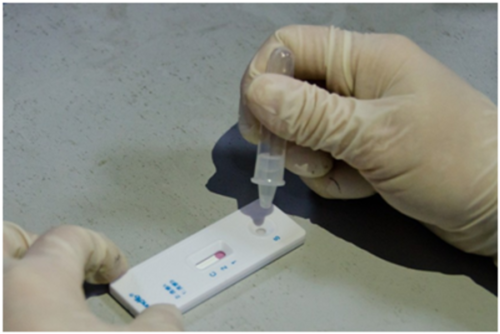How Do Flu Test Kits Work?
2024-01-24

In the midst of flu seasons or viral outbreaks, the need for quick and accurate diagnostics is crucial. Flu test kits have become invaluable tools for healthcare professionals in identifying influenza viruses promptly.
1. Understanding Influenza
Influenza, commonly known as the flu, is a contagious respiratory illness caused by influenza viruses. There are four types of influenza viruses: A, B, C, and D. Type A and B strains are typically responsible for seasonal flu outbreaks, while type C and D causes milder symptoms. Flu test kits primarily focus on detecting types A and B viruses.
2. Types of Flu Test Kits
a. Rapid Influenza Diagnostic Tests (RIDTs):
RIDTs are the most commonly used flu test kits due to their simplicity and quick turnaround time. These kits detect the presence of influenza antigens, proteins found on the surface of the virus, within a patient’s respiratory specimen. The process involves the interaction between the antigens and specific antibodies present in the kit.
b. Molecular Tests:
Molecular tests, such as polymerase chain reaction (PCR) and nucleic acid amplification testing (NAAT), are more advanced and accurate methods for flu detection. These tests identify the virus’s genetic material (RNA) by amplifying it through a series of biochemical reactions. Molecular tests are highly sensitive and can differentiate between influenza types and subtypes.
3. Steps Involved in Flu Testing
a. Sample Collection:
The first step in conducting a flu test involves collecting a respiratory specimen from the patient. This can be done using nasal swabs, throat swabs, or in some cases, nasal aspirates or washes. The sample should ideally be taken within the first few days of symptom onset to obtain accurate results.
b. Test Procedure:
For RIDTs, the collected sample is mixed with a buffer solution provided in the kit. The mixture is then applied to a test strip or cassette, which contains antibodies specific to the influenza antigens. If the sample contains influenza antigens, a visible line appears on the strip, indicating a positive result.
Molecular tests require the collected sample to undergo specific laboratory procedures. These include extracting the viral RNA and amplifying it using PCR or NAAT techniques. The amplified genetic material is then analyzed to determine the presence of influenza virus, its type, and subtype.
4. Advantages and Limitations
Flu test kits offer several advantages, including:
– Rapid results: RIDTs provide results within minutes, allowing for immediate diagnosis and timely treatment.
– Ease of use: Flu test kits are designed to be user-friendly, making them accessible to healthcare professionals in various settings.
– Early detection: Identifying the flu early enables healthcare providers to implement appropriate infection control measures and offer targeted treatment.
However, it’s important to note the limitations of flu test kits:
– False negatives: Rapid tests may occasionally provide false negative results, particularly if the viral load is low or the sample collection technique is inadequate.
– Limited subtype identification: While molecular tests can differentiate between influenza strains, RIDTs usually cannot provide subtype information.
– Professional interpretation: Test results should always be interpreted by a healthcare professional, considering the patient’s symptoms and clinical history.
















